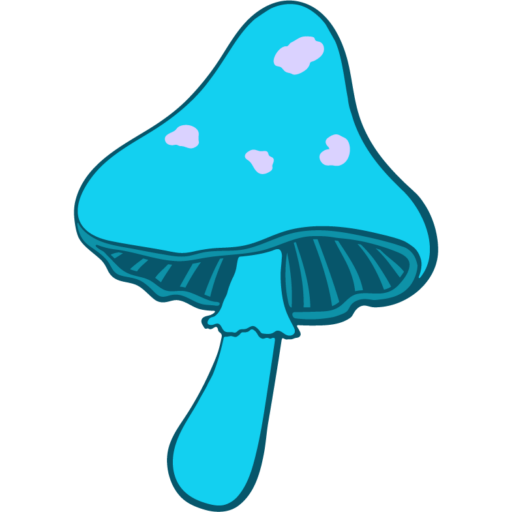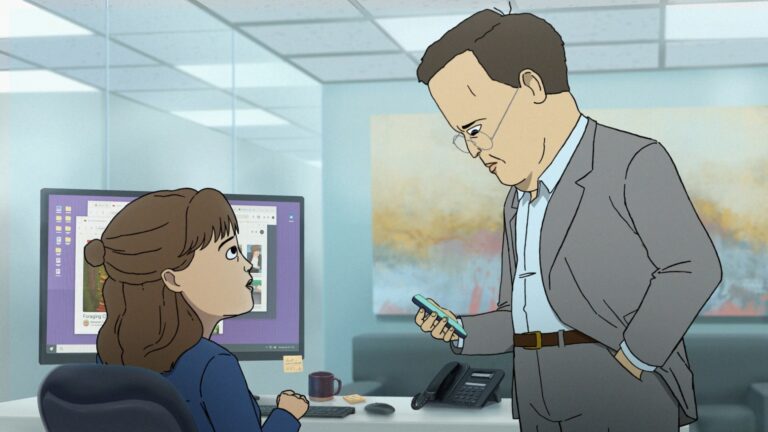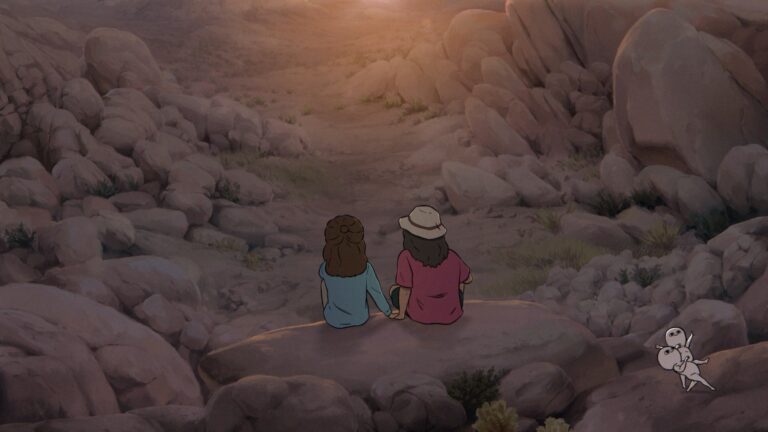Inside the Mushroom’s Portal World
When Adult Swim dropped its animated psychedelic thriller, Common Side Effects, fans probably anticipated some trippy visuals. But even the most seasoned viewers weren’t quite prepared for the surreal delight of the show’s heady climactic sequences. The scenes in question, showing protagonists Marshall and Frances plunging deep into a psychedelic mushroom trip, took animation to impressively weird new heights, complete with amorphous, pill-shaped humanoids that are – lovingly – nicknamed “weird little guys” by the show’s creators.
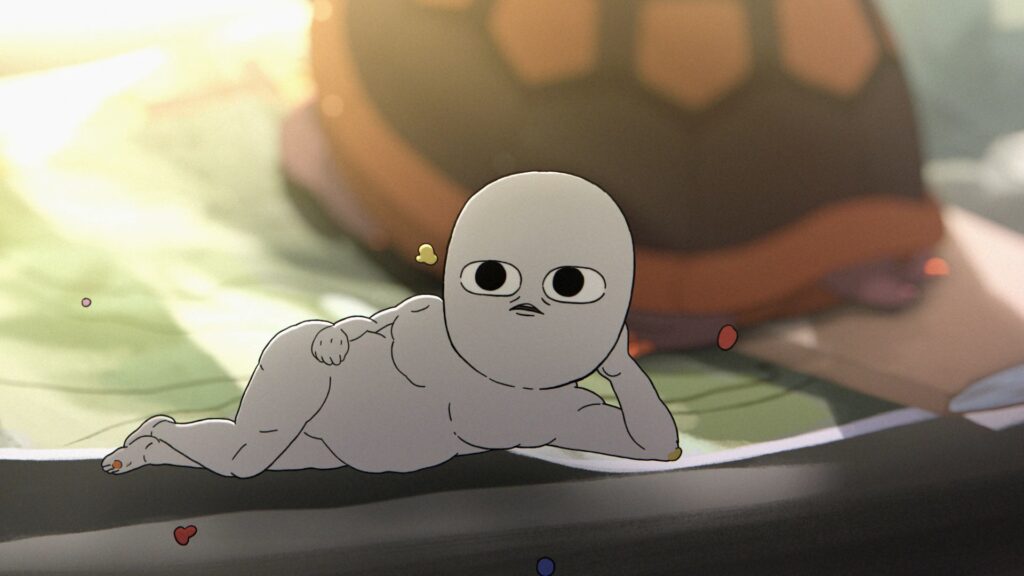
So, what exactly are these bizarre, blob-ish entities? Are they benevolent guides helping the duo navigate their existential crises? Or malevolent beings sinisterly orchestrating human anxieties in technicolor nightmares? Surprisingly, according to the brains behind the show, neither scenario applies.
The Neutral Weirdness of the Weird Little Guys
Co-creator Joe Bennett clarified in recent interviews that these enigmatic figures aren’t strictly good or bad – they’re “just kind of there”. And this ambiguity isn’t accidental. According to Bennett and fellow creator Steve Hely, that neutrality is exactly the point. When a person takes a powerful mushroom, as they drew from extensive research of psychedelic trips, hallucinations don’t offer neatly packaged moral meanings. They simply exist, unclear and open-ended.
- They appear as gentle reminders of the randomness and ambiguity experienced during altered states of consciousness.
- These pill-people look silly and surreal, yet hold subtle metaphors about modern medicine and pharmaceutical culture.
- They aren’t just random hallucinations but carefully crafted symbols with layers of underlying critique.
Because the creative team wanted viewers to interpret these “little dudes” through personal lenses, they deliberately stripped away binary moral labels, creating characters who linger somewhere oddly in between – reflecting, perhaps, the psychedelic insight that nothing is purely good or bad if examined closely enough.
Creating a Psychedelic Wonderland: A Visual Deep Dive
To represent these abstract mental realms, the series’ animation team leaned heavily into vibrant, liquid visuals. Colors melt, merge, drip, and flicker vividly through the surreal sequences, conjuring sensations of genuine psychedelic exploration. Bennett openly admits he wanted to avoid worn-out, stereotypically “trippy” visuals – things like spirals and checkerboard illusions. Instead, the creative team drew from real imagery, natural textures, and wild, organic patterns. They turned to natural wonders like California’s Joshua Tree National Park for inspiration, transforming earthly landscapes into mind-expanding, alien territories.
But why natural landscapes? Bennett believes psychedelic experiences, no matter how strange, often reflect something deeply familiar yet newly perceived. Channeling natural imagery nudges audiences subtly toward recognizing hidden connections between internal mental spaces and the external physical world. This balanced visual approach makes the sequences feel not only surreal but oddly relatable, anchoring the show’s psychedelic abstractions firmly to reality – even if it’s reality warped beyond recognition.
Inspiration Behind Mushroom Madness
The influence behind these hallucinatory narrative threads runs even deeper. Series creators cited prominent figures from psychedelic and natural medicine communities, most notably author and ethnobotanist Terence McKenna and prolific mycologist Paul Stamets. Their decades-long exploration into mushroom-powered experiences shaped much of the show’s philosophical outlook.
Bennett explained how researching Stamets particularly inspired him. The scientist frequently discusses mushrooms as multi-dimensional organisms: edible, medicinal, deadly, psychedelic, and everything in between. This multidimensional intrigue became a cornerstone philosophy for Common Side Effects. Mushrooms were chosen not just for their visual potential but as powerful narrative metaphors, exploring healing, danger, and catharsis in humans’ relationships with medicine, wellness, and the corporate influence muddying both fields.
- Paul Stamets’ work influenced Marshall and Frances’ journey, highlighting mushrooms as complex, contradictory entities.
- Terence McKenna’s philosophical discourses reinforced the intentional ambiguity of the show’s psychedelic sequences.
- These real-world thinkers broadened philosophical themes, allowing the show’s creators to push narrative boundaries.
Bennett and Hely didn’t merely lean into psychedelic philosophy, though. Their narrative styling was heavily impacted by cinema and literature as well. Chief among these influences were filmmaking legends, the Coen Brothers. Their famously genre-bending narratives – comedy blended seamlessly with noir, drama colliding with thriller conventions – inspired the eclectic storytelling approach seen throughout Common Side Effects. This hybridization allowed serious explorations into themes of corporate malpractice, health crises, and pharmaceutical controversies. Yet it also let creators insert humorous surprises and bizarrely captivating surreal sequences, enhancing overall watchability.
A Commentary on Medicine, Media, and Big Pharma
As cartoonish as those floating humanoid pill shapes might seem, there’s a symbolic significance lurking inside their ambiguous features. Noticeably pill-shaped yet vaguely humanoid, these creatures encapsulate the uneasy tension of modern pharmaceutical culture. Medicine promises healing, safety, and comfort. Yet in pill form, it also represents corporate profit, manipulation, and unintended consequences.
The series consistently challenges audiences on ideas surrounding medicine and big pharma culture in society today. What should provide harmless relief too often becomes a consumer good, packaged neatly yet distastefully commercial. By casting these pharmaceutical symbols as strange, uncanny beings managing neither friendly nor unfriendly gestures, the show cleverly highlights medicine’s inherent ambiguities in our daily lives: useful yet potentially harmful, healing yet possibly addictive, comforting one moment, anxiety-inducing the next.
Why Ambiguity Matters: Creators Intentions Explained
Ambiguity wasn’t accidental; it was central to creators thematic goals. Like truly potent psychedelic experiences themselves, these sequences had no clear definitive meaning assigned. Instead of preaching concrete interpretations, creators invite viewers to project their own ideas onto the abstract imagery.
- Are the “little guys” internal or external reflections, manifestations of inner anxieties, or something else entirely?
- Is their neutral presence comforting or disconcerting?
- Does their lack of definition mirror the complexities surrounding health, medicine, or even life itself?
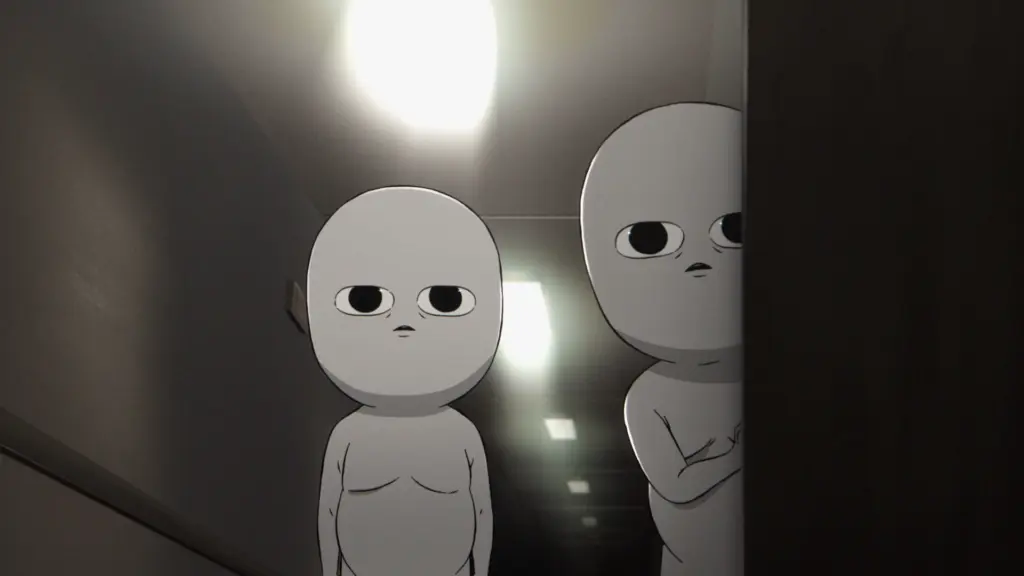
Posing these open-ended questions expands the series’ resonance, inviting deeper introspection among viewers. Psychedelics notoriously defy neat categorization into straightforwardly “good” or “bad” trips – they defy classification altogether, slipping into subjective, complicated personal truths. With Common Side Effects, Bennett and Hely effortlessly translate this subjective uncertainty onto screens, making audiences active participants rather than mere passive observers.
Down the Rabbit Hole We Go…
Ultimately, diving into the “weird little guys” portal reveals something larger and richer than just surreal entertainment. It’s an artistic meditation, cleverly disguised as humorous animation. Under psychedelic lights and fluid dreamscapes, the show tackles tough nuances – ambiguous morality, medicines’ powerful yet complicated role in civilization, and personal anxieties universal to audiences everywhere.
Through its weird little characters, naturally inspired visuals, philosophical insights from mycology experts, and deliberate ambiguity, Common Side Effects emerges as a strikingly smart psychedelic frolic. It playfully nudges viewers to question cultural assumptions and personal perceptions alike. And as these pill-shaped, mushroom-fueled characters remind us, sometimes meaning isn’t clearly good, bad, or anywhere logical in between. It’s just delightfully weird – and there – in all its confusing, psychedelic glory.
